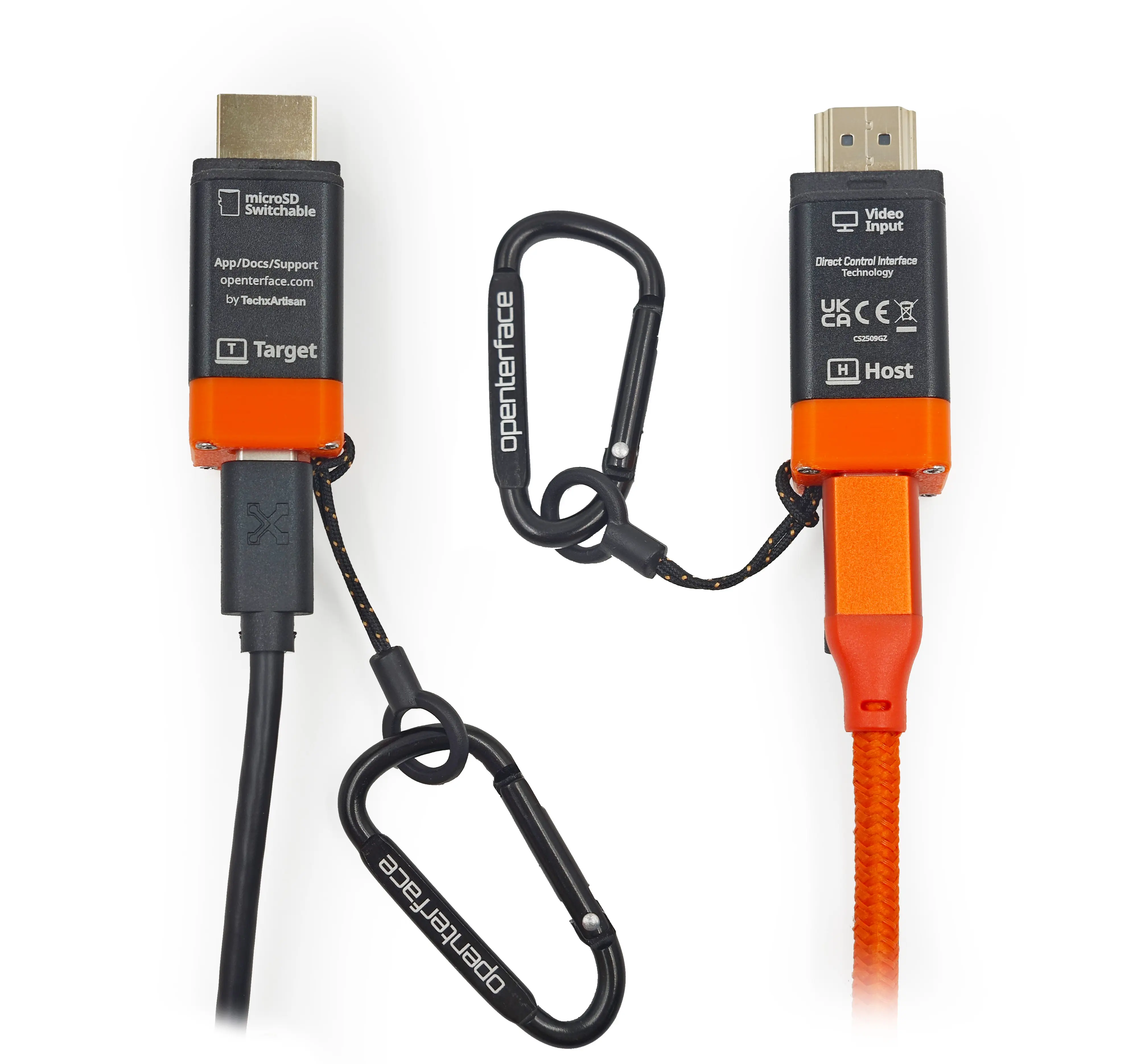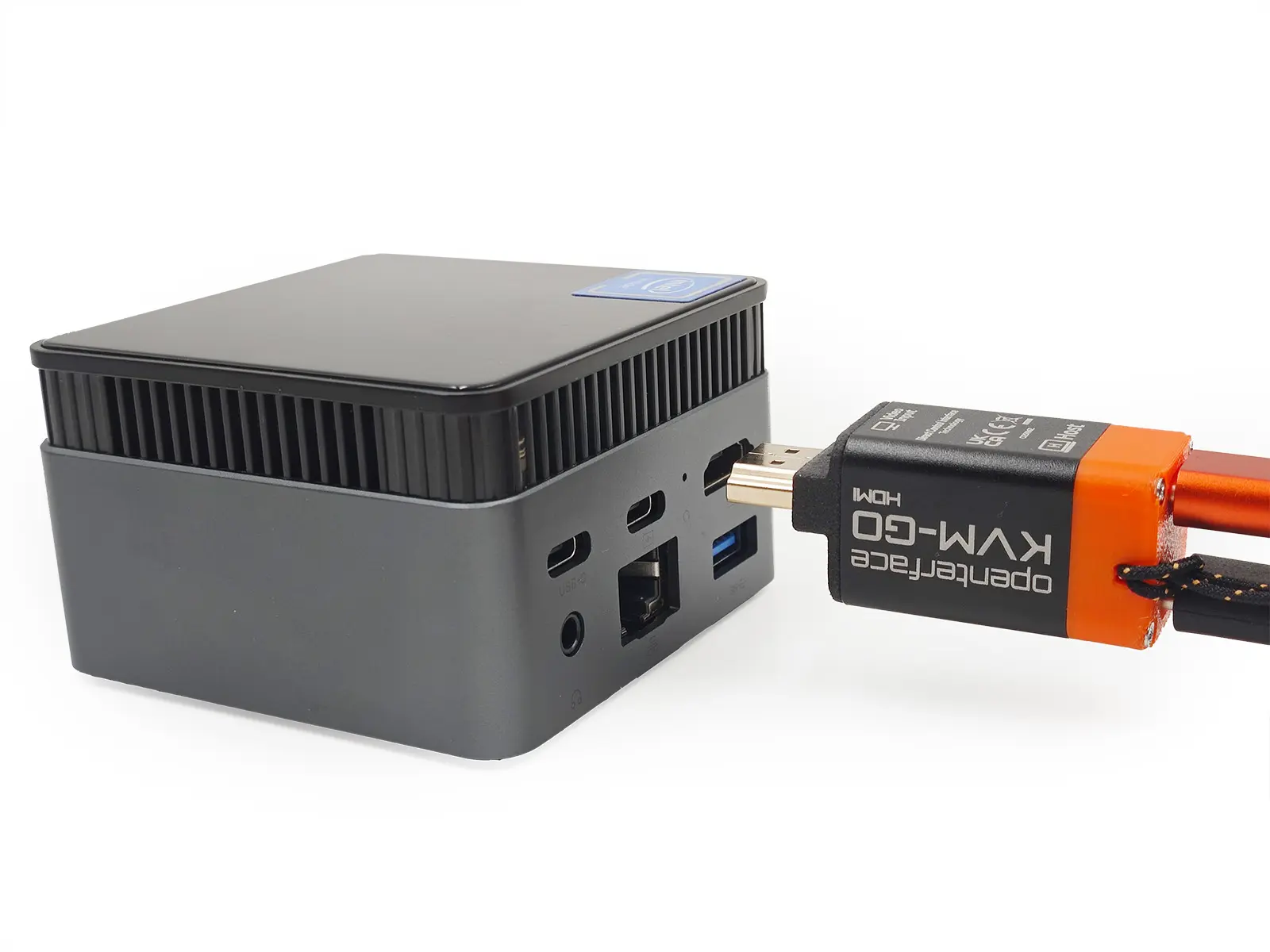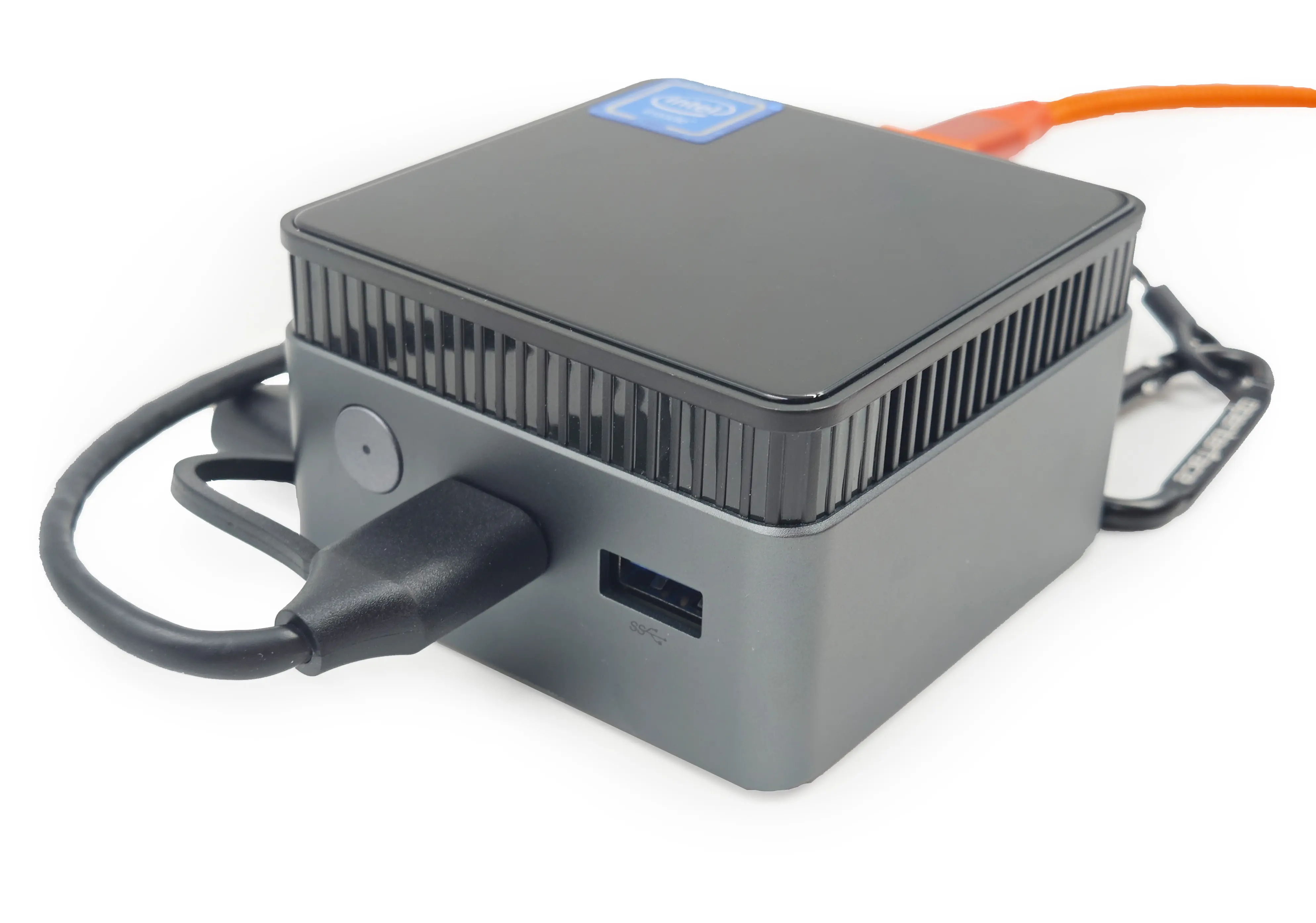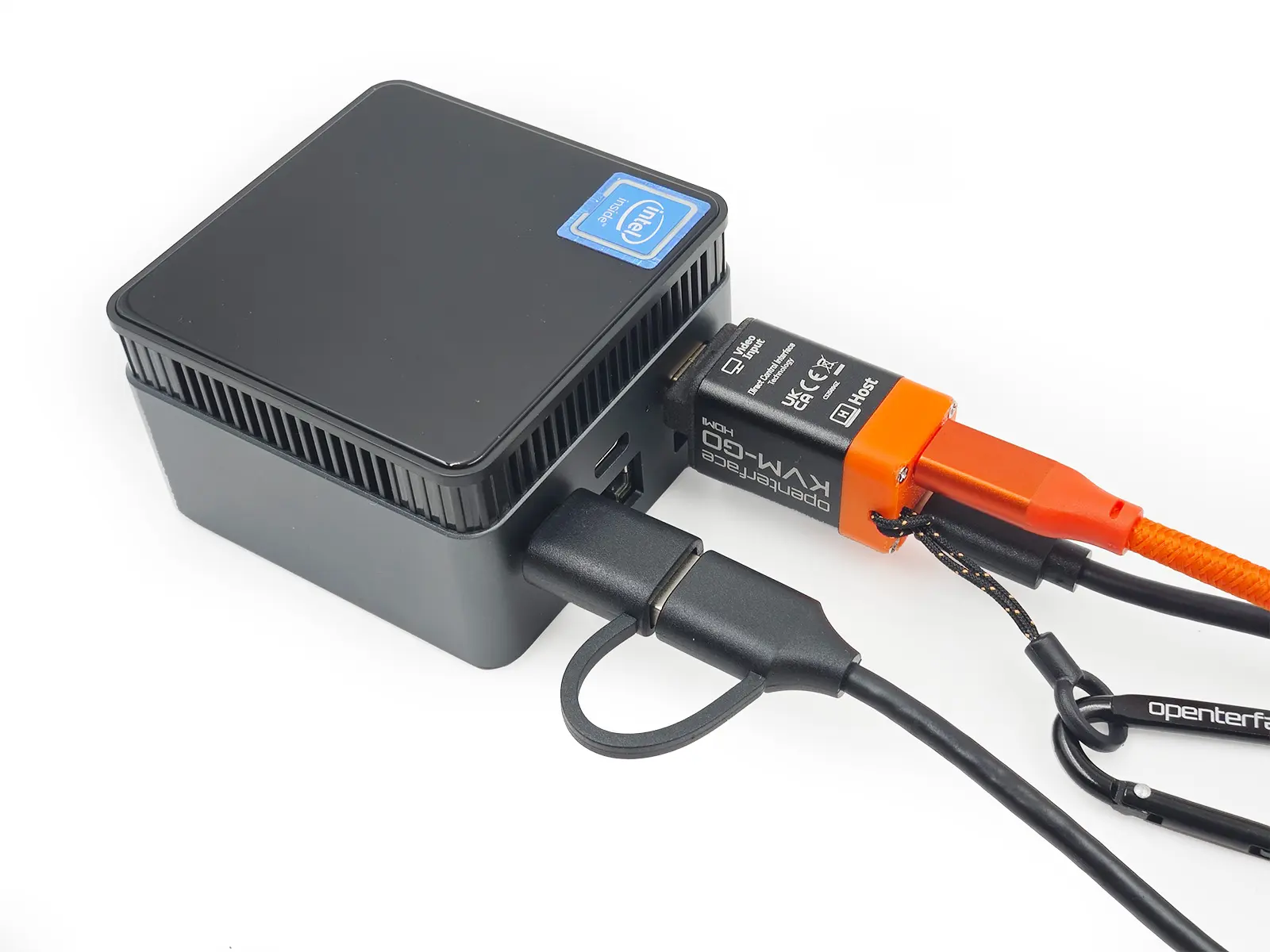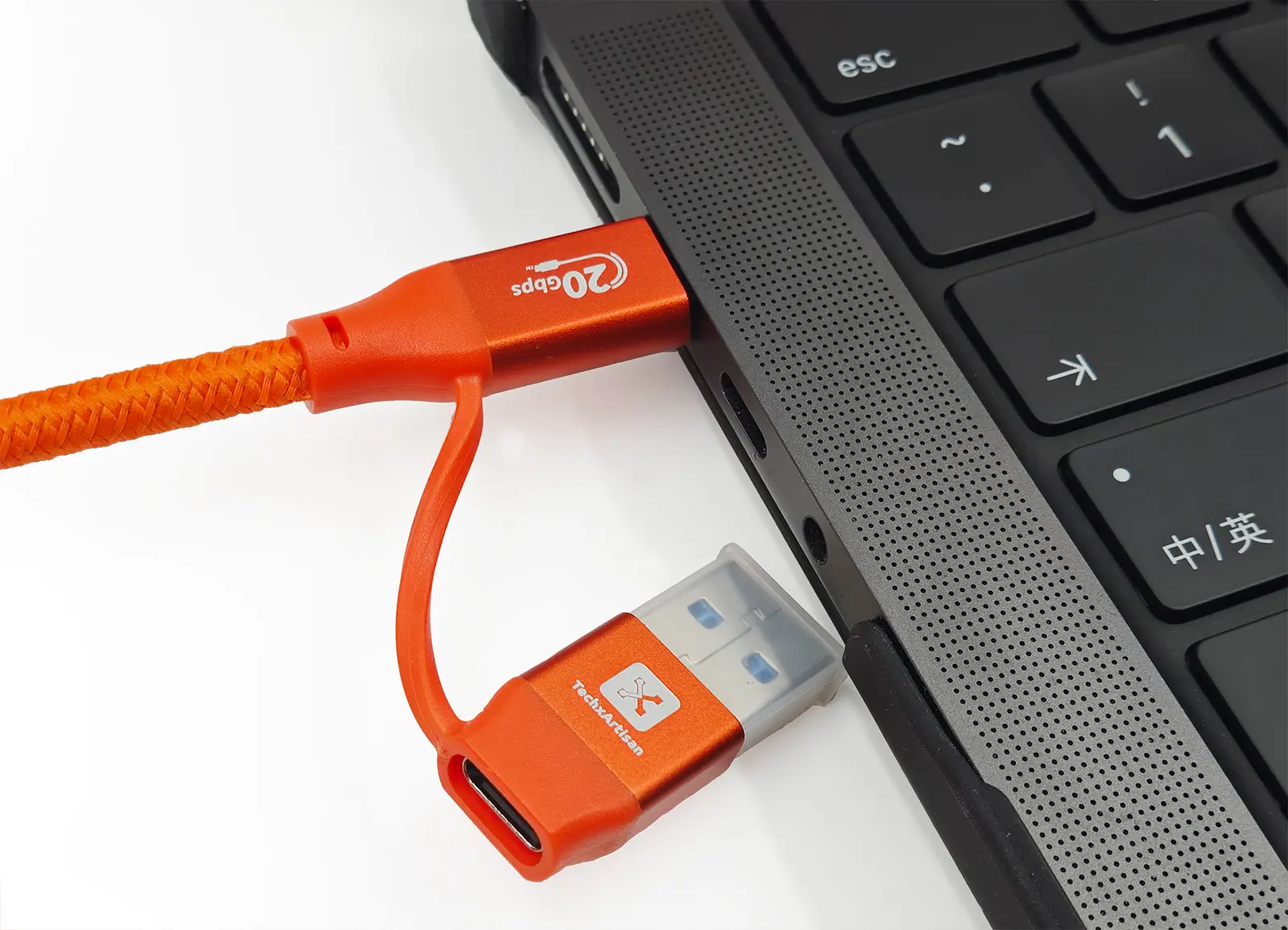How to Connect | Setup Guide | Openterface KVM-Go
Overview of Connections
The images above shows all connections between the KVM-Go, host computer, and target device.
- Host Computer: Requires the Openterface App installed.
- Target Device: No software and pre-config needed.
- Video: The built-in connector plugs directly into the target device, so you don’t need to carry or manage extra video cables.
What You Need for Connections
To set up your KVM-Go, you’ll need the following components:
- KVM-Go (HDMI / DP / VGA) – connects to the target device (for video capture)
- Black short USB-C cable – connects to the target device (for keyboard & mouse emulation)
- Orange long USB-C cable – connects to the host computer (running the Openterface App)
Cable Length Disclaimer
The exact cable lengths included in the official KVM-Go package are not yet finalized and may differ slightly from those shown here.
The cables demonstrated in this guide are from the classic Mini-KVM Toolkit and are for illustration purposes only.
Using Your Own Cables
If you choose to use your own cables, ensure they are high-quality, data-capable USB cables. Poor-quality or charge-only cables may result in:
- Black screen issues
- Unresponsive keyboard or mouse inputs
- Intermittent connection drops
- Flickering or unstable display output
Step-by-Step Setup
Step 1 — Connect USB Cables to KVM-Go
- Black USB-C cable → Plug into the port labeled
Target on the KVM-Go case.
- Orange USB-C cable → Plug into the port labeled
Host.
Warning
Both USB-C ports are physically identical.
Always double-check the labels on the case surface to avoid mixing them up.
Step 2 — Connect Video to Target
Plug the built-in male video connector directly into the target device’s video output port.
Step 3 — Connect Target USB Port
Connect the black USB cable to the target device for HID control.
USB-C Connection Check
Some USB-C ports may not provide a secure connection. If you experience intermittent keyboard/mouse control issues, gently wiggle the adapter connection to ensure it's properly seated and making contact.
Step 4 — Connect Host USB Port
Connect the orange USB cable to the host computer.


